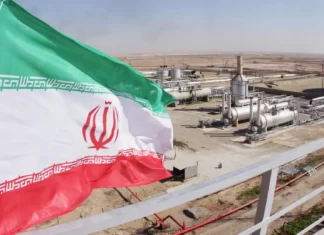KARACHI: The Sindh government has raised strong objections over the approval of a major irrigation project worth over Rs200 billion in Punjab. This development is expected to escalate ongoing tensions between the two provinces over water-sharing disputes, with Sindh accusing Punjab of restricting adequate water flow downstream.
The Central Development Working Party (CDWP) recently gave the green light to Punjab’s plans to build two new canals— the 176km-long Cholistan canal and the 120km-long Marot canal— in the Cholistan area. Sindh had already lodged a formal complaint against the project with the Council of Common Interests (CCI), but no decision has been reached yet.
In its complaint submitted to the CCI in July, the Sindh government contested the Water Availability Certificate (WAC) issued by the Indus River System Authority (IRSA) in January. Sindh claimed that the water regulator “overstepped its authority” by certifying water availability for the two canals. One canal, the Jalalpur, is being constructed on the right side of the Rasul Barrage, while the Cholistan canal is on the left.
Sindh’s Irrigation Minister, Jam Khan Shoro, criticized the CDWP’s approval of the project, emphasizing that the Executive Committee of the National Economic Council (ECNEC) had linked its approval to the CCI’s decision on Sindh’s complaint. Shoro referred to ECNEC’s observation in February 2024, where it stated that Punjab’s irrigation network project would be “subject to CCI approval.”
The project, costing Rs211.34 billion, is slated for completion by July 2030. According to a cost breakdown, Rs174 billion will go towards construction, including Rs76.57 billion for the Cholistan canal, Rs47.6 billion for Marot canal, and Rs39.19 billion for connecting link canals. The rest will be allocated for afforestation, land acquisition, and project management.
Shoro also raised concerns over water availability. He pointed to a pre-CDWP meeting held in September, where the capacity of three link canals — Rasul-Qadirabad, Qadirabad-Balloki, and Balloki-Sulemanki — would be increased to handle water draw for the project. However, Shoro remarked that Punjab had not provided data on the current capacity of these canals.
Originally, the Cholistan canal was intended to be a non-perennial canal, flowing only during flood seasons. However, Punjab now plans to execute it as a perennial canal, which means it will be operational year-round through “departmental adjustments.” Shoro stated that the term “departmental adjustments” remains unclear.
Shoro also highlighted the changing water flow downstream at Kotri. He noted the stark difference in water flows between the pre-climate change era (1976-1998) and post-climate change (1999-2023), where flows have significantly decreased.
Punjab, however, defended the issuance of the water availability certificate, stating that 0.449 MAF of water from its flood share had been allocated for the Cholistan canal. The province also claimed that the increased storage capacity of the Bhasha and Mohmand dams would enhance existing irrigation systems and ensure sufficient water for new projects. However, according to Sindh’s submissions, Punjab has yet to provide detailed data supporting these claims.
Sindh’s ongoing concerns include the environmental flow of the river downstream of Kotri, where a panel of experts appointed by the Centre recommended an 8.6 MAF environmental flow. Shoro pointed out that many years have seen minimal environmental flow, and the number of “no flow days” has increased.
This water project could become a flashpoint between the two provinces as the Sindh government awaits CCI’s decision on its complaint while questioning Punjab’s water management and regulatory practices.
























